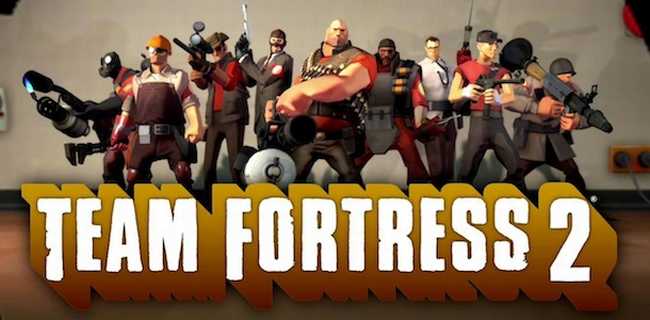Valve, you seriously need to stop embarrassing the industry like this. Not only making the quintessential class-based FPS, but supporting it relentlessly with unspeakable amounts of new content to the point where it’s barely recognizable as the same game and giving it away for free while it’s still racking up decent sales as a full-price product? If business models were people, the traditional industry one would be calling its therapist in tears right about now.

The move seems to have been fueled by the rationale that more people on Steam = better for business, which isn’t completely preposterous, especially since Valve has been going free-to-play crazy with other people’s games as well. To be fair though, those were free from the beginning. TF2 only took four years to get to that stage. On the other hand, this will pretty much ensure there will be populated TF2 servers to play on in perpetuity, right up there with World of Warcraft and a select few others. So, there’s that.
The Evolution of Team Fortress 2
Team Fortress 2 (TF2) has undergone a remarkable transformation since its release in 2007. Initially launched as a part of the Orange Box, TF2 quickly gained a dedicated following due to its unique blend of class-based gameplay, humor, and distinctive art style. Over the years, Valve has continuously updated the game with new maps, modes, weapons, and cosmetic items, keeping the community engaged and the gameplay fresh.
One of the most significant updates came in 2011 when Valve made TF2 free-to-play. This decision was a game-changer, attracting a massive influx of new players and ensuring the game’s longevity. The introduction of the Mann Co. Store allowed players to purchase cosmetic items and other in-game content, providing Valve with a steady revenue stream while keeping the core gameplay accessible to everyone.
Impact on the Gaming Industry
Valve’s approach to TF2 has had a profound impact on the gaming industry. By continuously supporting and updating the game, Valve has set a new standard for post-launch content. Many developers now follow a similar model, offering free updates and cosmetic microtransactions to keep their games relevant and profitable.
Moreover, the success of TF2’s free-to-play model has influenced other major titles. Games like Fortnite, Apex Legends, and Warframe have adopted similar strategies, offering free access to the core game while monetizing through cosmetic items and battle passes. This shift has made high-quality gaming experiences more accessible to a broader audience, changing the landscape of the industry.
Valve’s commitment to TF2 also highlights the importance of community engagement. By listening to player feedback and involving the community in the development process, Valve has fostered a loyal and passionate player base. This approach has been emulated by other developers, leading to more player-centric game development practices.
In conclusion, Valve’s handling of Team Fortress 2 has been nothing short of revolutionary. By making the game free-to-play and continuously updating it with new content, Valve has ensured its longevity and set a new standard for the industry. The impact of TF2’s success can be seen in the numerous games that have adopted similar models, making high-quality gaming experiences more accessible to players worldwide. Valve’s commitment to community engagement and post-launch support has not only kept TF2 relevant but has also influenced the broader gaming landscape, setting a precedent for future game development.
Source Develop
Latest Geeky Gadgets Deals
Disclosure: Some of our articles include affiliate links. If you buy something through one of these links, Geeky Gadgets may earn an affiliate commission. Learn about our Disclosure Policy.